Awwww, you know what time it is!
 It’s time to wrap up the JAST USA Collection with Seasons of the Sakura!
It’s time to wrap up the JAST USA Collection with Seasons of the Sakura!
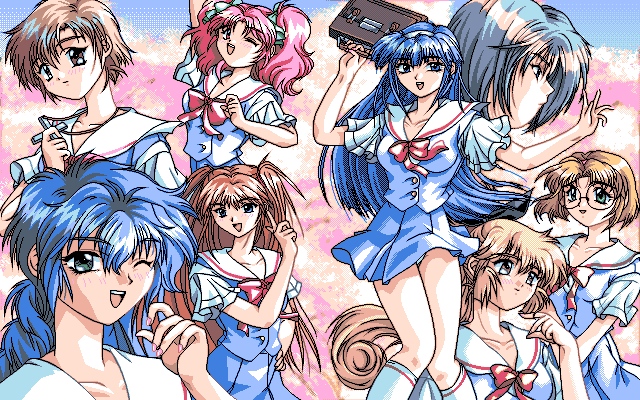
Before we go into the meat, here’s some final tidbits about the JAST USA Collection game disc.
Back in the Runaway City review, I talked about how the games had their title screens skipped completely. Well, thanks to the good folks at The Asenheim Project, I managed to snag a recording of Runaway City’s intro.
Seasons of the Sakura strangely also had a short title screen intro, but it’s ACTUALLY LEFT INTACT in the collection! But like I said, the title menus were skipped, and that means something else for this game. The original version of the game had a profile section for all of the characters. And I mean ALL of them, not just the girls. This profile section was only accessible from the title screen, which means there’s no way to look at them in the collection.
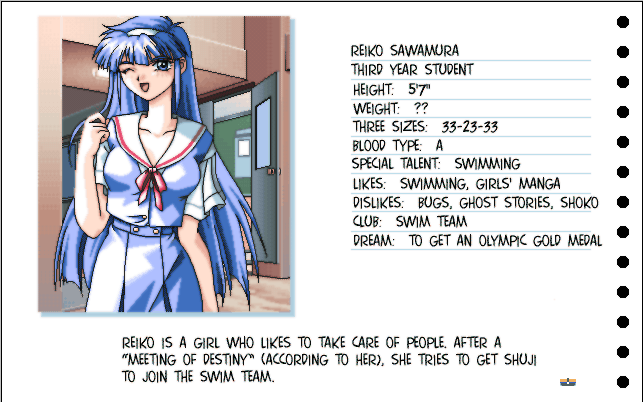
Also, you don’t bring up the save/load options the same way as the original. In the collection, all three games share a sort of universal UI for saving, loading, display options, and skipping dialogue. It looks terrible.

The collection was originally printed in 2002 and reprinted in 2012. I am not entirely sure there are any differences between the two versions. The most blatant of offenses is NOT that it can’t go into windowed mode: it’s that it does have a windowed mode, but the program automatically forces the system into 640 x 480, making windowed mode completely pointless. I’m pretty sure this shouldn’t have been problem even in 2002. It just reeks of lazy programming.
Well, on to the game.
Seasons of the Sakura, or Sakura no Kisetsu, was the first JAST USA title, though it is actually the latest of the three games to be developed in Japan. Sakura no Kisetsu and Meisou Toshi were both developed by Jast’s Tiare division while San Shimai was developed directly under Jast itself. I find it a shame that none of the other Tiare titles were ever brought over, as I find Tasogare no Kyoukai – a horror adventure with unique characters – to be more intriguing than any of these three.
Creatively, Seasons of the Sakura is a step back. It’s a typical choose-your-girl adventure set in a high school and the most dramatic occurrence is your participation in the sports festival. Technically, however, it’s head and shoulders above Three Sisters Story and Runaway City: the graphics all look cleaner and more vibrant, the writing is better, the music is catchy, you make decisions that actually make a difference, YOU GET TO CHOOSE WHO YOU END UP WITH, and subtle choices to get the trickier girls actually follow some kind of logic.
Now, no one would care if this was just your run-of-the-mill high school dating game. That’s where Seasons of the Sakura’s gimmick comes into play: every single character is lifted straight out of a popular 90s anime. Let’s start out with the main girl trio of the game:
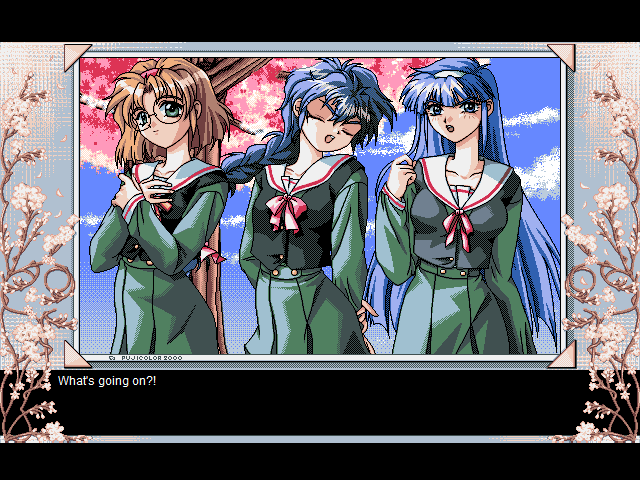
Yeeeeep, it’s the Rayearth girls. Kiyomi, the baseball manager, is pretty much a quirky Fuu. Mio, the ace tennis player, is a blue-haired Hikaru. And Reiko, the ace swimmer and big sis type you bump into on the way to school, is a calm and busty Umi.
The Rayearth girls are pretty much a constant presence, and there seems to be an expectation that they’re the main choices, with Reiko being the unspoken leader. I guess they really liked Umi.
Next are the side girls:
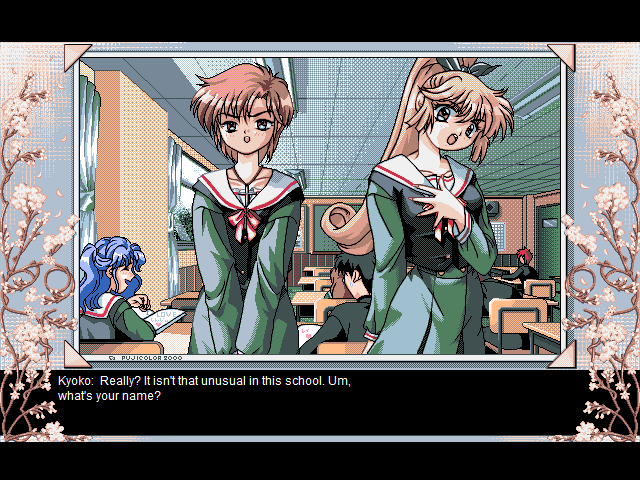
Seia and Meimi are lifted from Saint Tail’s Seira and… Meimi. *cough* Yeah, couldn’t even come up with a different name. Meimi is much, much taller and bustier than her original counterpart, while Seia… just looks more girly and has a wasted psychological quirk that goes nowhere.
The teacher of the class is named Kyoko. Or…
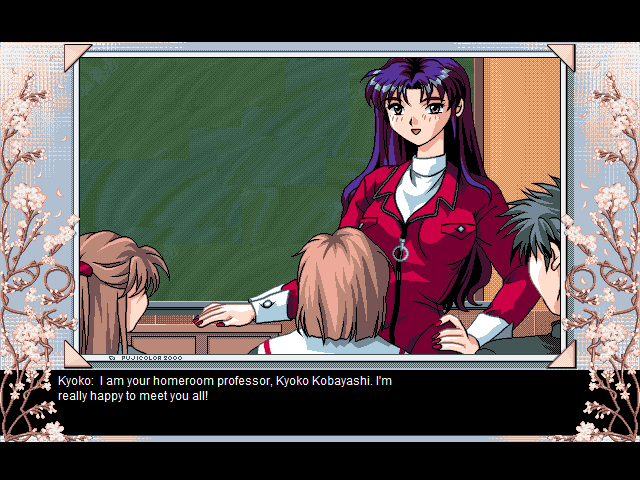
Yeah, it’s freaking Misato. Speaking of Evangelion, the next tier of girls I call the wild cards are Ruri and Aki. AKA Rei and Asuka.
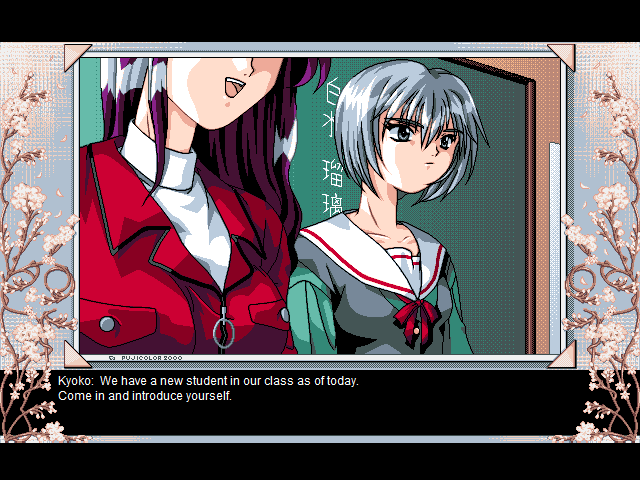
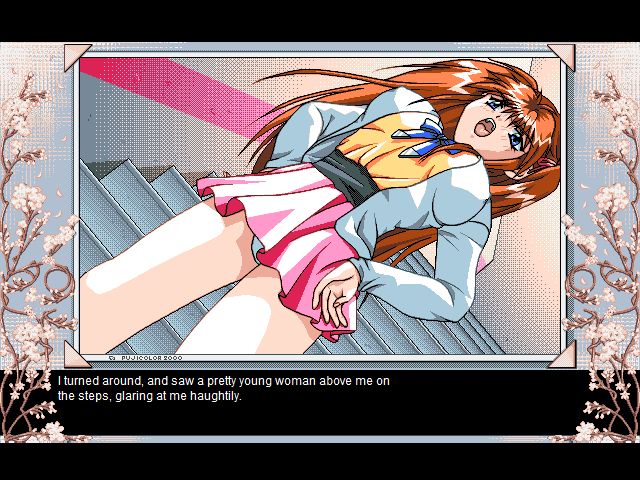
Interestingly, Ruri and Aki don’t have any interaction with each other whatsoever. Aki is a tennis player and Mio’s rival. I assume they’ve been bitter enemies ever since Aki stole the redness from Mio’s hair.
Ruri is the trickiest girl in the game to get and has the most fleshed-out character. Also, it’s clear the artists are fans of Rei and take pride in this homage:
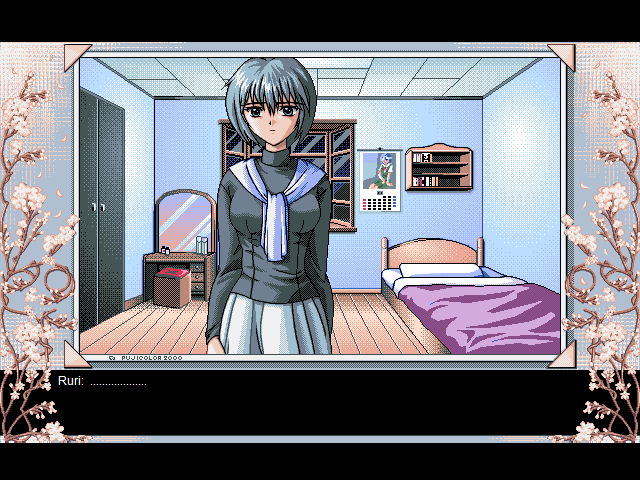
Lastly, we come to the easy-mode character, Shoko.
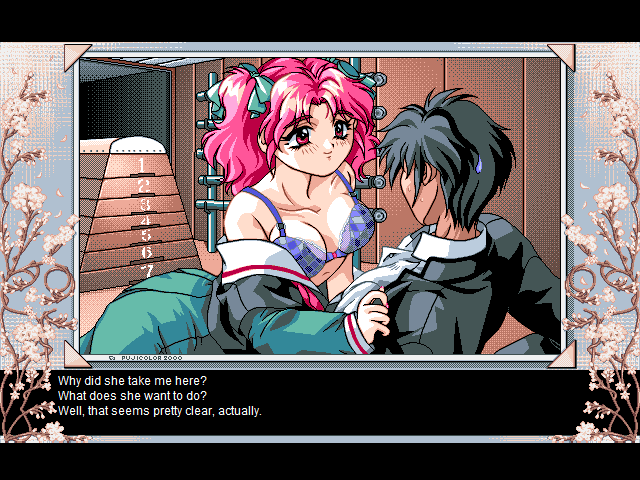
Shoko is the weirdest one of the bunch: she’s based on Shoko Inaba from Pia Carrot. While everyone else is loosely based on their original’s personality, Shoko is completely different from her original. In SoS, Shoko is pretty much the school slut. She immediately targets you and tries to get you into the sack, she has no discernible character outside of getting you into the sack, and she gets an exclusive event halfway through the game where regardless of any points you built up for the other girls, you have the opportunity to do her and get her ending HALFWAY THROUGH THE MAIN GAME with no resistance at all. Literally, all you have to do is say yes and you get her.
First of all, Pia Carrot is itself a hentai game, so there’s no real appeal to adding her of all 90s characters to choose from. Second, although game Shoko and anime Shoko are pretty freaking different, neither of them are sluts. Look at the above image and be amazed at how they could get that from this:
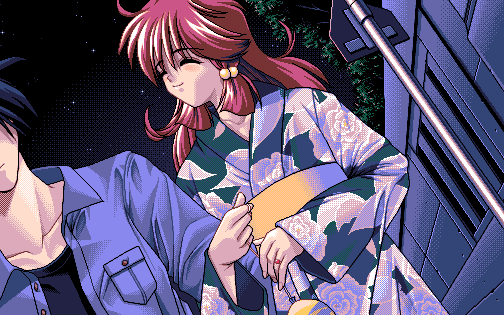
Or this:
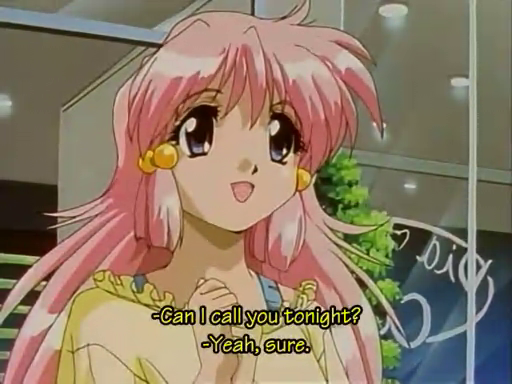
I suppose it’s a reference to how Shoko is the easiest girl to get in the Pia Carrot game, but SoS Shoko downright PREYS on you.
And speaking of preying, let’s get back to Kyoko, the teacher. There is no Kyoko path, but there is an unavoidable scene where she takes your virginity, and all you can do is accept her. The only way to prevent Kyoko from taking your virginity? Ending the game before then, because you can get the Shoko ending first!
Oh, and even the side characters are from various anime. Makoto is Kensuke from Evangelion, Shuji’s father Nobuyuki is Nobuyuki from Tenchi Muyo, as far as I can tell, Shuji’s mother Hidemi is a green-haired Misaki from Tenchi Muyo, and Dean Katsuhito is a younger Katsuhito from Tenchi Muyo. You would think with three Tenchi Muyo references, they would have the decency to replace Shoko with, say, a Ryoko or Ayeka. Ryoko would have fit the part perfectly, and a slutty Ayeka… oh, man…
Anyway, the game pretty much progresses through a series of events that present you with opportunities to increase your affection with another girl. There are some detailed guides for this game, but I’ve found that it’s actually incredibly simple and doesn’t really work on a point system at all.
Event 1: Talk to Meimi on the way to school. If you talk to her, her ending is pretty much open. You don’t have to do anything else.
Event 2: Talk to Ruri on the way to school. If you don’t talk to her, you’re screwed for her path.
Event 3: Camping trip. You get to choose up to three different girls to go with you, and the first girl in your list will have a scene with you… unless you choose Meimi or Seia, because they writers didn’t bother (it defaults to Reiko), and you can’t even choose Mio or Aki. Picking Ruri here is pretty much necessary for her path.
Event 4: Beach trip. You can have a chat with any girl as long as you think about her. Ultimately, it doesn’t matter who you talk to. It’s just extra dialogue.
Event 5: Say yes or no to Shoko. You could’ve completely ignored Shoko the entire game. Doesn’t matter. Say yes and you get her.
Event 6: Choose to walk home with Seia or Meimi. This seems to be the only choice that matters for Seia’s ending, while it’s completely unnecessary for Meimi’s ending.
Event 7: Talk to Aki before choosing your dance partner. If you don’t, her ending is locked.
Event 8: Choosing your dance partner. Who you pick is pretty much an indicator of who you’ll end up with.
Event 9: Christmas present. If you pick Seia or Meimi, you get their ending and the game stops there. If you pick Reiko, Mio, Kiyomi or Aki, you have to make sure to pick the same girl for Valentine’s Day or you get a bad ending. If you can pick Ruri, you can get her ending.
Event 10: Chase after Ruri. If you get the option to chase after her, you get her ending right here.
Event Final: Valentine’s Day (technically, White Day). If you gave a Christmas present to any other girl than the girl you pick for Valentine’s Day, you get a bad ending. HOWEVER, if you went to Ruri’s house for Christmas and chose not to chase after Ruri when she leaves town forever, then it literally doesn’t matter what you did for the rest of the game; you can freely choose Reiko, Mio or Kiyomi for their endings without having put any effort into them whatsoever. It’s as if Ruri took all her secrets with her when she left. THAT. IS. AMAZING. Mind-boggingly, if you went with Reiko or Kiyomi for Christmas, Mio’s rejection dialogue will reference you going with Aki.
For the most part, the game acts as if it works on a point system where you work on a girl to earn her ending, but really, whether you can get a girl or not tends to depend on one or two key moments; every other choice is just filler.
One thing I really did appreciate about it was that the main character, Shuji, is a perfect storm of female appeal. He’s a physical specimen that’s awesome at every sport he tries (except swimming), but he’s also nice, approachable, and has character flaws that make him seem more sensitive. With most generic harem characters, you wonder “how is THIS guy so popular / lucky?” With Shuji, you can’t really argue that.
The game is disappointing in that they could have gone the extra step with some of the paths. You don’t have the option to talk to some of the girls during some events for no good reason. Also, for no real reason, Rin from Runaway City gets a cameo. Because… people are likely to have played Runaway City?
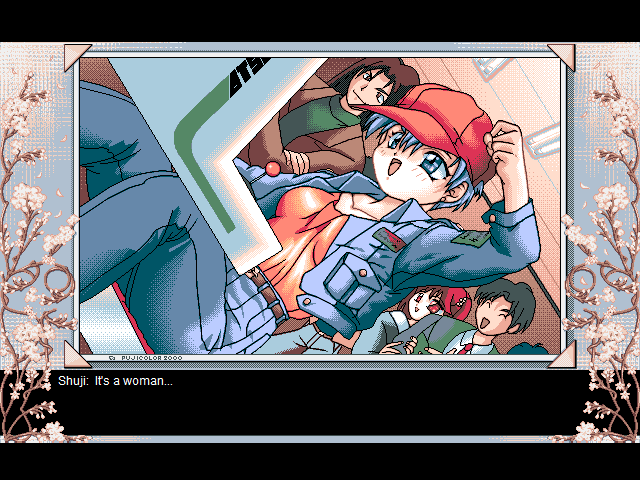
The Rin scenes made me play Runaway City just to get an actual H-scene with her. I have no regrets, but man… Runaway City is such a bad game.
Ultimately, the game is just as average as the dating sims and harems it references, relying on its sketchy lawsuit-inviting gimmick to garner sales (it worked). It certainly wasn’t bad, and many consider it to be a classic. It’s easily the best and most successful of the three games in the JAST USA collection, though it’s also easily the least original. I wonder what that says about its target audience.
That wraps up the JAST USA Memorial Collection. I’ll move on to the Milky Collection in due time, but as for next week… it’ll be a review of U-Jin Brand, a collection of oneshots that gets about as borderline as it gets. I just wish I had a copy of the dubbed version. Can’t get enough of Dan Green doing hentai.
